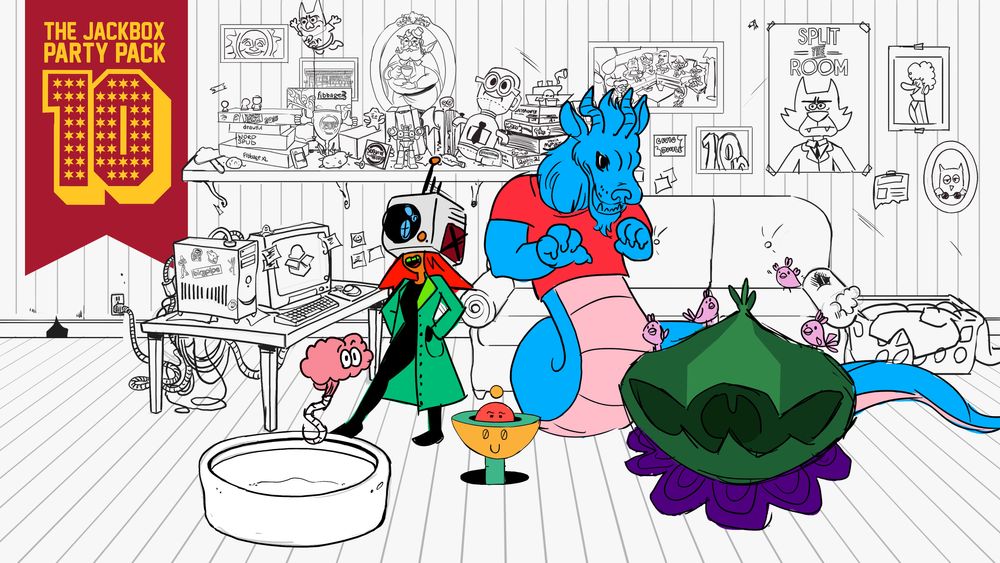Behind the Scenes of Party Pack 10: Game Directing Edition!
A lot of people may think that being the director of a video game is similar to being a movie director; it’s glamorous, sexy, and you make millions of dollars to yell into a giant cone. Although many of those things are correct, there is one major difference: game directors make games.
The game directors at Jackbox Games act almost as a head coach for the game team. They oversee a team and make sure everyone has what they need to fully execute the play. Being a game director is not about being a megalomaniac making all of the decisions. It’s about organizing and directing everyone on the team to best work together to succeed.
We sat down with a few Jackbox game directors to ask them what went into making Party Pack 10.
What was your role on Party Pack 10?
Spencer Ham: I was the game director for Timejinx. A game director is someone who works closely with cross-discipline game leads (engineers, artists, writers, sound designers, QA, producers) to help drive the vision and execution of gameplay. One week might be spent focusing on the theme of the game, while another week could be spent trying to balance the scoring.

Early character designs for Timejinx by Steff Egan.
Tim Sniffen: My current title is Director. I was the director [and Editorial Lead] of Tee K.O. 2! At Jackbox, directing a game means being the final word on game design and tone. Our producers keep track of logistics, staffing and schedule, while directors make sure a player experience is the best and clearest it can be.
Alina Constantin: I was the Game Director on FixyText. As game director and game designer, my role often feels halfway between a conductor and a gardener. The highlights are supporting every team member in using their skills to the best of their ability towards what excites them most about the idea and strengthening lines of communication between each discipline's aspects that crystalize the game. Then I pick and prune, balancing all the parts towards a specific gameplay experience we envision in a party pack, its pacing and progression from start to finish of a game session.
Warren Arnold: I’m a Senior Creative Director and I was the Director for Hypnotorious. Directing means making sure all parts of the game work as a cohesive unit to deliver a great experience to the user. I often think of a director as being a liaison for the user. If I’m not having fun as a user, then the players at home likely aren’t having fun either.
Brooke Breit: Game Director [on Dodo Re Mi](Creative Director at Jackbox in general during that development cycle.) I was in charge of overseeing the production of the game from a creative and practical standpoint. The Game Director does not make all of the decisions but leads the team in development, making sure our decisions are in line with the creative vision we crafted, and also constantly asking, "Does this make sense to the player?" and, "Is this fun?” Also, because Dodo Re Mi didn't have a ton of editorial, I wrote and recorded the host lines.
Where did the original concept for your game come from?
Spencer Ham: Arnie Niekamp, our studio creative director, pitched the concept [for Timejinx].
Tim Sniffen: There had been public outcry for a Tee K.O. sequel for many years! We decided it was time, but wanted to make sure to bring some new variations on the Tee K.O. formula to the game, which were different clothing/font/color options, a new approach to the battle match-ups, and some other twists.
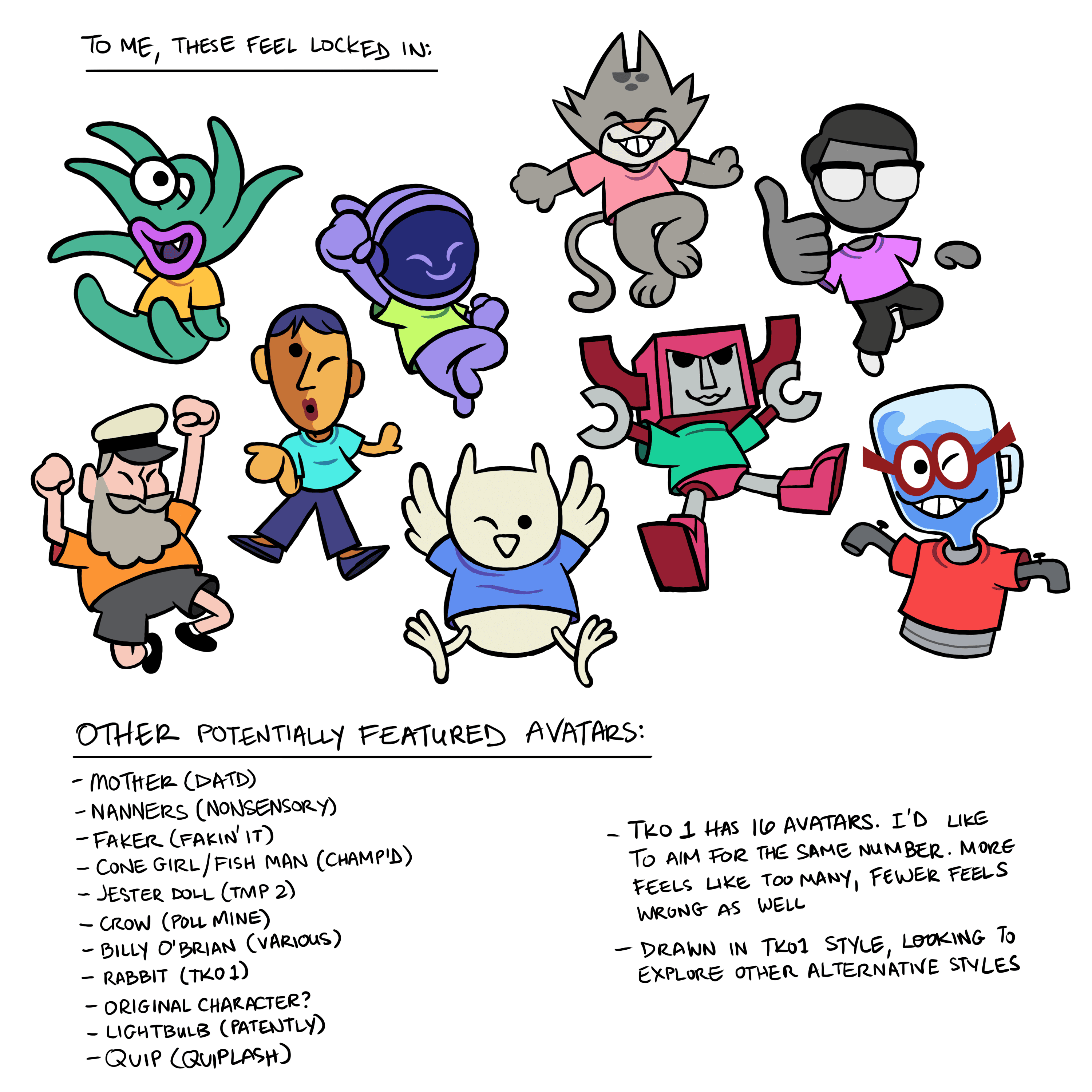
Early character plans with notes for Tee K.O. 2 by Hector Padilla.
Alina Constantin: The concept for FixyText came from the brilliant mind of one of our writers, Liz Anderson, who asked the question: "What if a group of friends could answer your risky texts for you by jamming together in a single text box? And also, what if there was no delete key?!"
As some of the best ideas, the goal was to make a game out of a very specific feeling. For us, it's that feeling when you've just pressed send on an important message, you look back at what you wrote, and want to throw your phone at the wall.
We were able to test out the core idea and pitch it very quickly with a Google doc and a few hilarious prompts and read-out loud moments. The surprising texts, organic jokes and giggle factor that resulted from every playtest sealed the deal.
Warren Arnold: The game was pitched by Rammel Chan as a hybrid trivia/hidden identity game.
Brooke Breit: Chase McClure, our infra engineer, is responsible [for the idea for Dodo Re Mi]! He made a prototype and pitched the game to the studio. He was really excited by the potential of making a Jackbox game where everyone plays instruments together. And it was really important to him that the instrument noises came out of your phone. I heard the pitch was chaotic and incredible.
The early prototype of Dodo Re Mi by Chase McClure, played on a recent Twitch stream.
How did the concept evolve from conception to completion? Did it stay mostly the same or did it change? What accounted for those changes?
Spencer Ham: I would say that [Timejinx] stayed around 60% the same. Some of the bigger changes we made were to the scoring. In the pitch, there were no year ranges provided. As you can imagine, this made scores wildly different and it made people anxious when guessing. So, we added guardrails to provide some focus for the players and to ensure nobody could lose on one question alone. With guardrails in place, we then decided that the objective is to have the lowest score at the end of the game (your total points are how many total years you're off). Arnie's prototype had the same cadence between question types so we just created more secondary question types and used them as a way to credit your score. The game alternating between your score growing and shrinking felt cool and novel for us.
Warren Arnold: [For Hypnotorious,] the biggest thing that stayed the same was that everyone had a secret identity that fit into one of three categories. We changed some aspects that made it a bit easier to figure out who your teammates might be so you could work together a bit more.
Brooke Breit: The core of [Dodo Re Mi] stayed the same from pitch. But, we spent a lot of the time figuring out how it works as a Jackbox game. The element of pleasing the plant came in a little later because it made sense to have a shared objective. But players also hold onto their own points which felt important as well. We learned a lot just by playing.
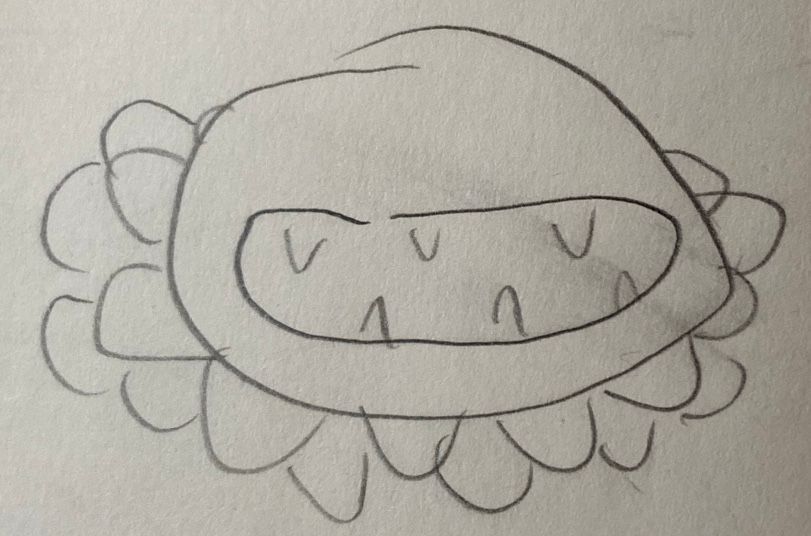
The original sketch of the Dodo Re Mi plant by Kyle Fleischer.
What were some of the biggest challenges you faced in development?
Spencer Ham: Time travel is a big concept, which meant there was no shortage of big ideas. Navigating these ideas was challenging because, yes, we wanted to make the coolest thing we could, but we also had to factor in our time constraints. Oh, and during the last week of production, we lost all of the VO files in the Time Hopping segment. We were luckily able to restore them, but not before I believe I soiled myself.
Tim Sniffen: One big challenge to creating a new version of TKO is that there’s no “800 new trivia questions!” or “1000 new drawing prompts!” because in TKO, players create a lot of what’s used in the game on their own, so we focused on offering players new options not available in TKO. Also, there’s a lot of love out there for the original, so we tried to be mindful of preserving what people loved about TKO1, while offering something new.
Brooke Breit: [Making a rhythm game] was completely new tech for us. Chase [McClure, Jackbox Senior Software Engineer,] built an entire tool just so we could make the beat maps that people play on their phones.
Another huge challenge was accounting for lag and audio latency when playing remotely. The team crafted the sync up moment (we spent A LOT of time trying to make that feel simple and almost like a ritual before you play), and that's really the magic that makes sure what you are hearing from the game screen matches the notes you are playing on your device, no matter where you are.
We also took it as an opportunity to explore avenues that aren't typical for us, like allowing players to drop in and out and not having a traditional number of rounds. I do think that the fact that it was such a different type of game let us open up to some other things we could try.
Alina Constantin: The biggest challenge to [FixyText] was the need to create a new piece of Jackbox technology called TextMap. [TextMap] is what allows for the kind of real-time collaborative editing that people are so familiar with in other online applications like Google Docs.
[For other Jackbox games] we'd usually update the game's global info with local player info only after everyone had completed and submitted their entry. FixyText needed to be able to show a player’s work much earlier, as it was being created and allow other players to interrupt each other's work and change it. One of the things that called for was a form of internal clock to sync up any text changes on player's phones with each other. Instead of a garbled mess of letters from all sides it makes it possible to display legible words, and humor as it evolves across the board.
It was definitely a feat of engineering from our team spearheaded by Lena Guerrero and our other infrastructure engineers Michael Angellotti and PJ Conde, who even went ahead and designed a custom keyboard to counter device-specific bugs.
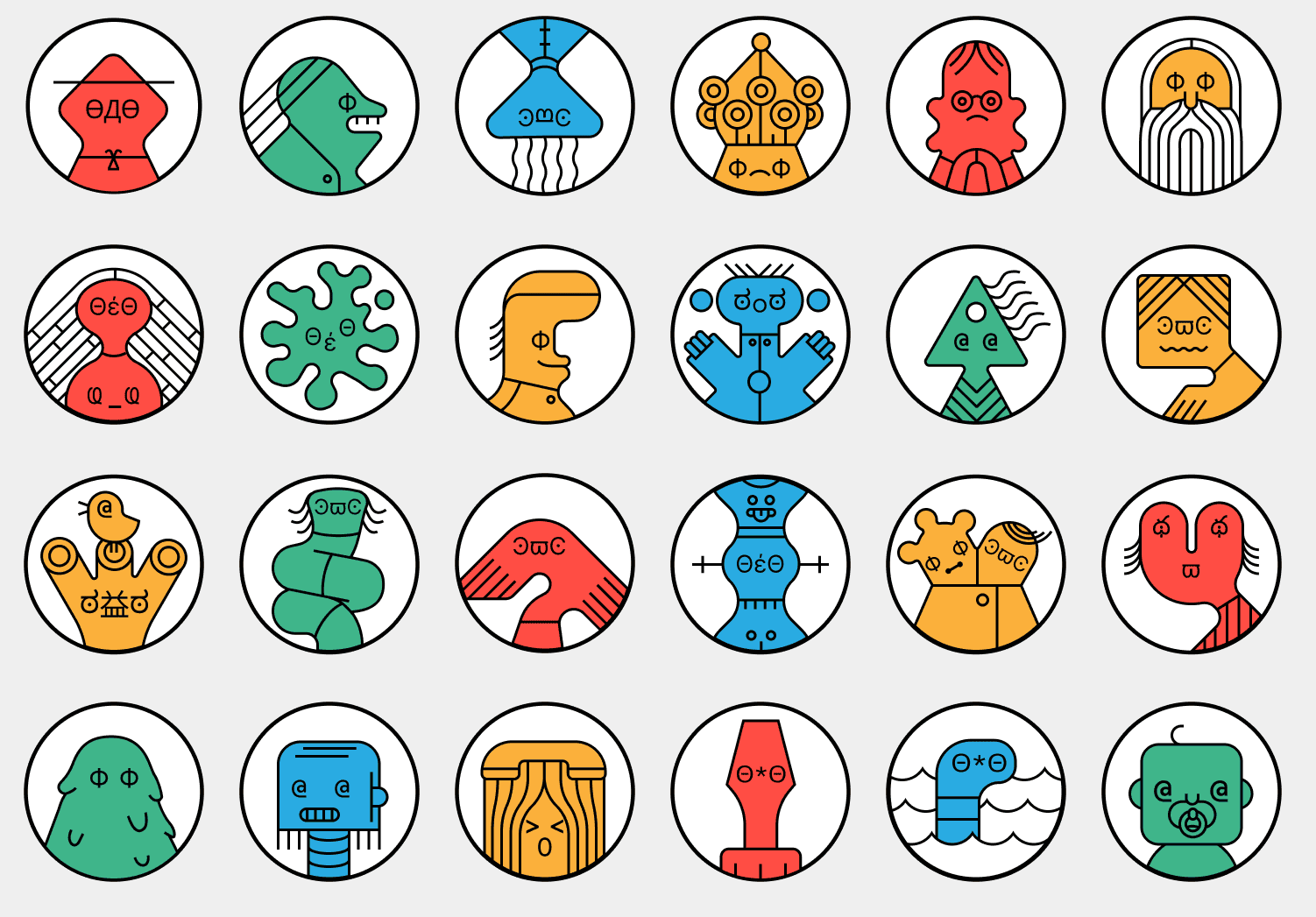
Early designs for FixyText by Bruno Rodríguez.
Do you have any advice for anyone hoping to direct or make games?
Spencer Ham: Just do what I did: move to a big city to pursue comedy and then switch lanes and focus on games. Ok, that's not the best advice, but I know there isn't really one path to get into the industry. My biggest advice for someone starting out would be to fail hard and fail fast. Regardless of the creative profession, failing often at the beginning is crucial--it's the only way to learn and grow. So if you have an idea, just make it, warts and all. Finishing a project means you have successfully beat those stupid thoughts in your head who tell you you should stop.
I'd also suggest being curious in areas beyond games. Drawing inspiration from literature, theater, TV, film, music, etc is just as important, in my opinion, as the inspiration you get from other games.
Tim Sniffen: Get used to DISCUSSIONS!
[Game directing is] rarely about appearing on a mountaintop and delivering your divine plan to be enacted. There are lots of conversations where the team figures it out together… Also, it’s more fun and easier when everyone is invested and understands the plan. It’s more “shepherding and guiding” than I would have thought before I was a game director. But making sure everyone feels included and like a contributing factor generally makes for a better, more satisfying end product.
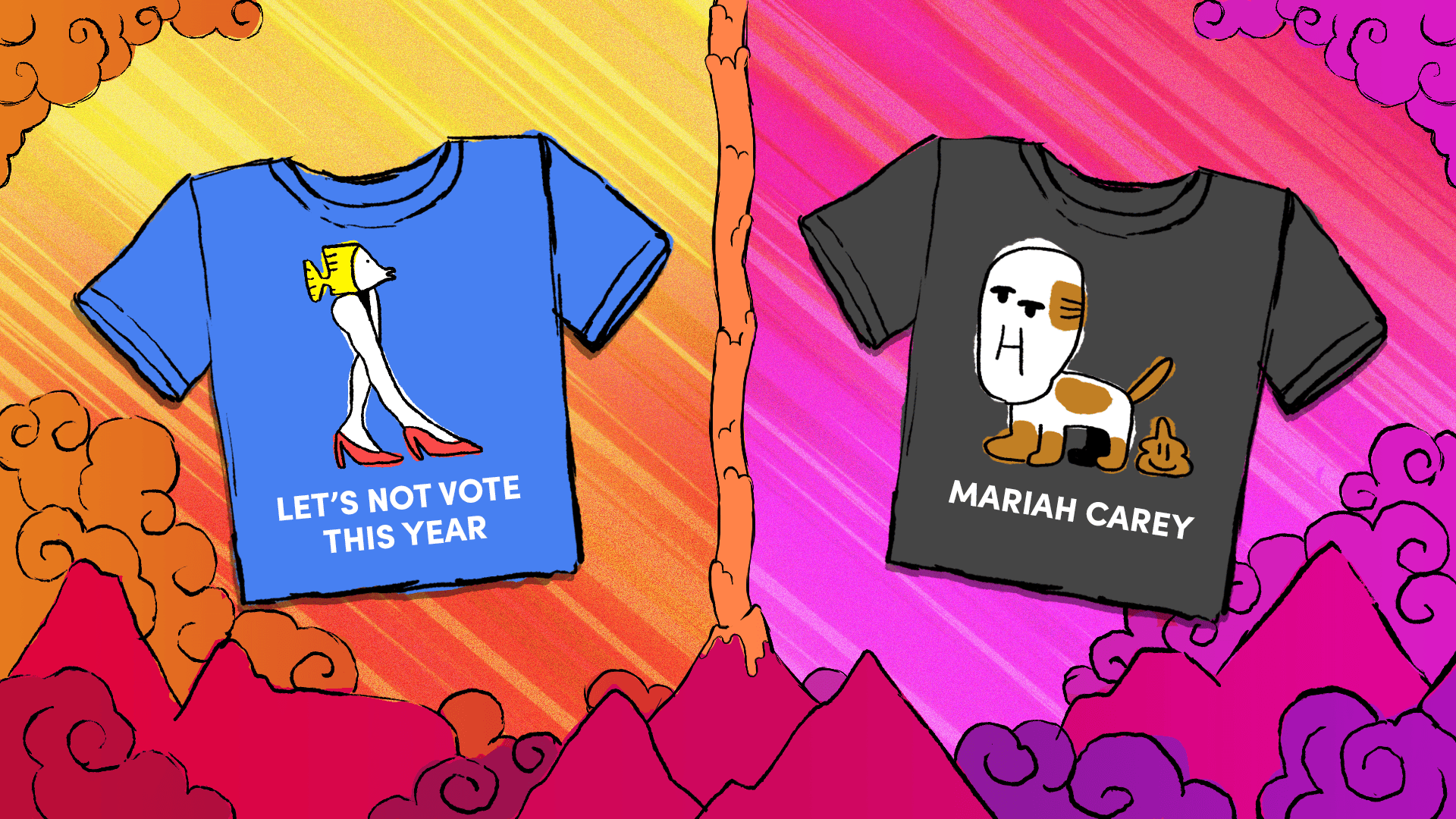
A Tee K.O. 2 mockup of the mountains by Hector Padilla.
Brooke Breit: Trust what you might be bringing to the table and be open to constantly learning more. I come from an improv comedy background, so a lot of my perspective and experience comes from what I know works in that context, and then I try to apply those principles to party games. I also love playing all different kinds of video games. Ultimately, we are trying to create things that are joyful for other people, so you need to find out what's joyful for you! I've found the best part of making games is how collaborative it can be. I always come into a process with strong opinions and a willingness to be completely wrong.
Warren Arnold: The most important thing is to find a way to always be doing it. You can’t get better unless you’re working at your craft. Even building a small game at home will teach you how to create a good experience. And think about what you like and what you specifically bring to the table that makes your game unique
Were there any fun stories or anecdotes you remember from making the game? Or any parts of the game that you are particularly proud of?
Spencer Ham: I really adored our Timejinx crew--it was a really wonderful group. There is a level of inside jokes that can only be understood when you're on a small game team facing a big deadline. One of these inside jokes is that the comedian Sinbad should have a big presence in the game. That joke culminated to actually creating a little statue of Sinbad next to our host, Jerri. Our team is now forever bonded.
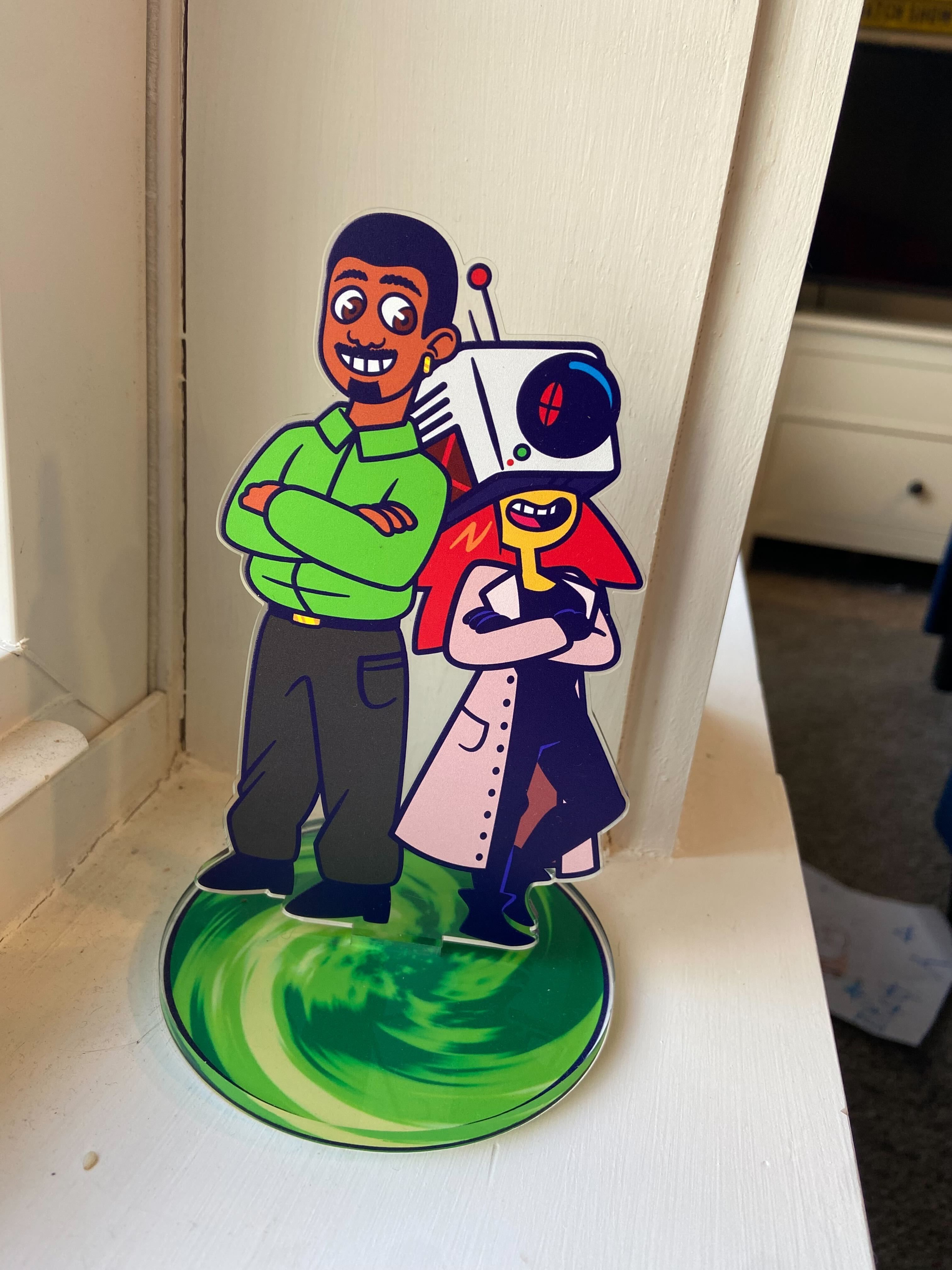
Sinbad and Jerri statue for the Timejinx team by Steff Egan.
Tim Sniffen: If a player submits nothing for their drawing [in Tee K.O. 2], the game will substitute in one of the hundreds of drawings made by Jackbox employees. When these were being submitted, I finally had to say: NO MORE PIZZA DRAWINGS. Jackbox people love pizza, apparently. Or at least they love to draw pizza.
Also, towards the end of production, the team is making new builds of the game and watching it every day. One day, something had happened in the code where instead of playing one animation, the game played EVERY SINGLE ANIMATION that was possible at the same time. It was glorious chaos.
A video of the bug where every Tee K.O. 2 animation played at once, taken from a recent Twitch stream.

